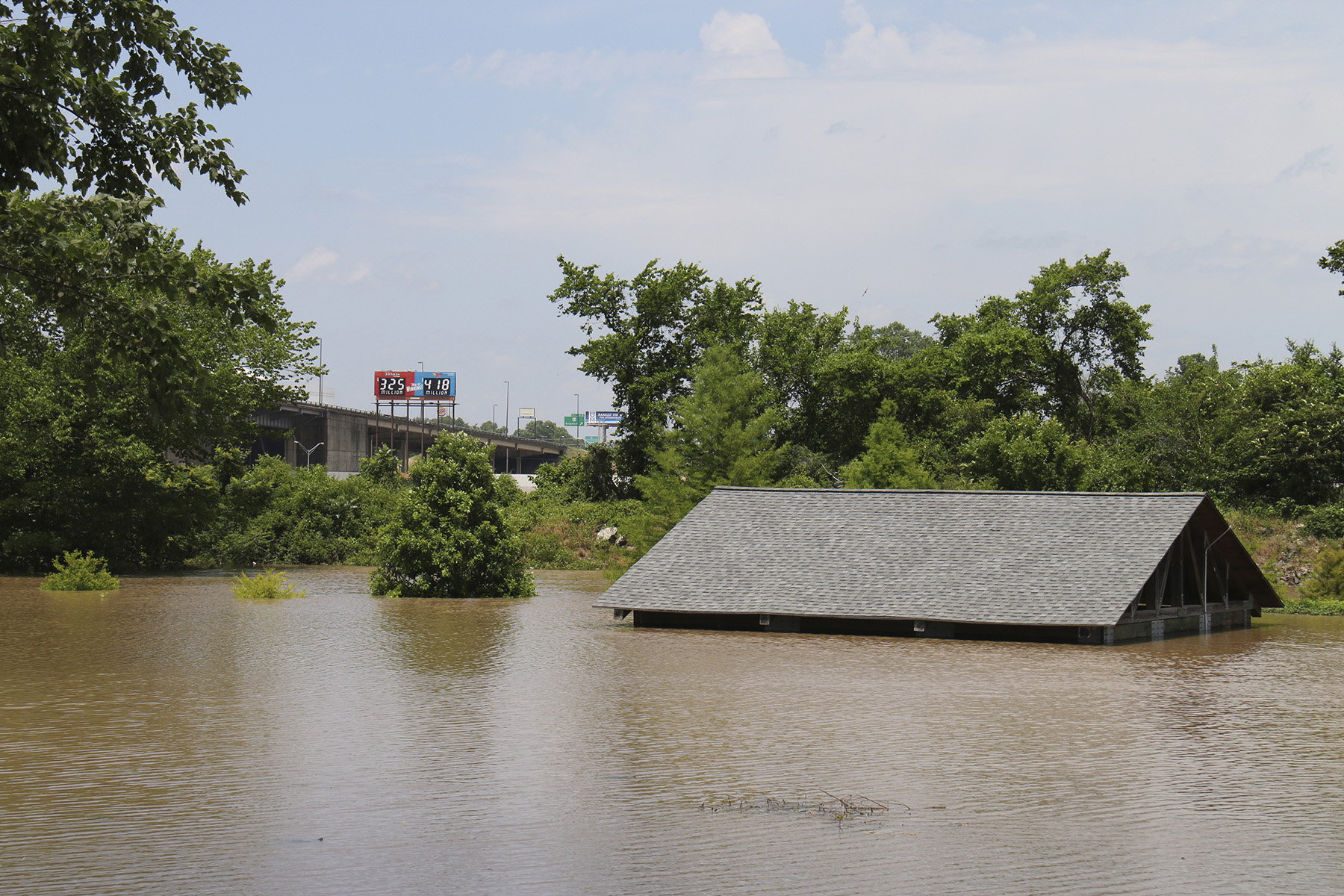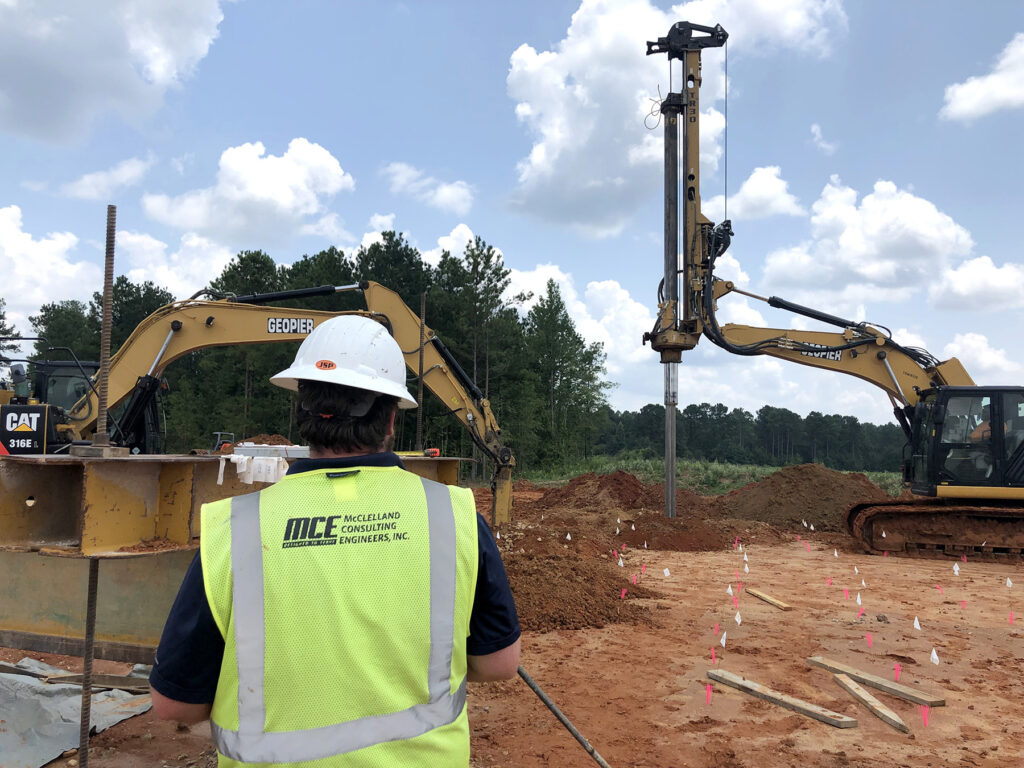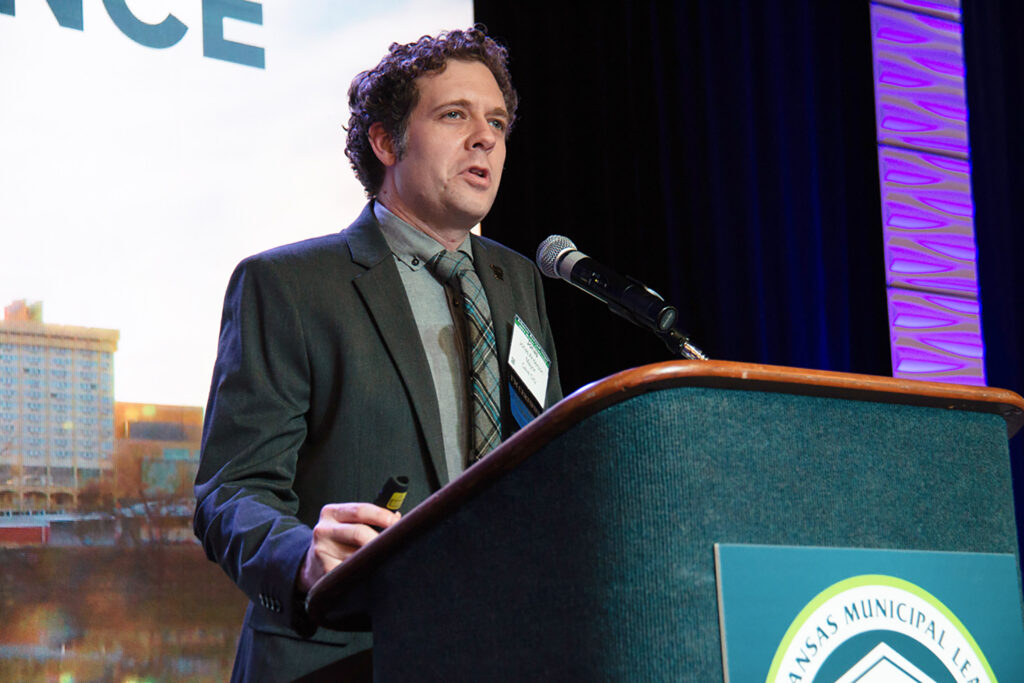Flooding is one of the most common weather-related disasters. Flood damage to property, infrastructure and agricultural yields can cause significant economic and social consequences to communities. According to Risk Factor, a nonprofit environmental risk estimator tool, 13 percent of properties in Arkansas have a 26 percent chance of being affected by flooding in the next 30 years.
Many Arkansas communities have historically lacked the resources and information to properly manage flooding. The National Centers for Environmental Information reported that the Arkansas River flood of 2019 caused an estimated $3 billion in infrastructure and property damage. Our aging flood mitigation infrastructure may have contributed to the problem; in 2017, the Army Corps of Engineers labeled over half of the state’s levees “in unacceptable condition.”
Local leaders working to manage flooding can find help from state programs and services. The Arkansas Department of Agriculture’s Natural Resources Division provides education, funding and consultation for city leaders on flood mitigation. Whit Montague, a certified floodplain manager with the Natural Resources Division, noted that making sure property owners purchase flood insurance is a key part of recovery and resilience. “The average flood insurance claim in Arkansas during 2006-2016 was approximately $22,000,” she said. “However, only about half of the homes damaged by floods are insured for flood damage, meaning that many homeowners are forced to pay out of pocket during recovery.”
Montague emphasized that lacking education about flood insurance is part of the problem. Lenders require property owners in official flood zones to purchase flood insurance before taking out a mortgage. In Arkansas there is no disclosure requirement for whether a property is in a flood zone, so many buyers don’t find out about the flood insurance requirement until they go to close. This leaves the purchaser with little opportunity to shop around for a better rate. Purchasers are often given high quotes that can add hundreds of dollars onto their monthly payments.
“What is missing [from the discussion] is that there are ways to reduce that insurance premium,” Montague said.
The Natural Resources Division supports communities in this effort by coordinating the state’s National Flood Insurance Program (NFIP). This voluntary program encourages communitywide adoption of minimum regulatory standards to manage flooding and allows property owners to purchase federally backed flood insurance. The state NFIP office is available year-round for phone, email, virtual and in-person consultation with local officials and citizens who have questions about flood insurance or mitigation.
The state also supports flood mitigation through administering federal grant funding to communities. Projects that receive funding can include repairing a levee, creating a detention or retention pond to collect floodwater, and training people to talk to the community about flood insurance. The Natural Resources Division can also provide funding for improving properties through floodproofing, relocation, elevation or demolition of existing structures.
The city of Clarksville demonstrates a successful communitywide flood mitigation project that received support in part from a low-interest loan administered by the Natural Resources Division. Clarksville’s downtown area lies in a 100-year floodplain, which stifled growth and revitalization due to high flood risk and the associated high flood insurance premiums. Clarksville’s levee was built in the 1950s and wasn’t deemed satisfactory to manage flooding in the area. The city received a $1 million grant from the Federal Emergency Management Agency and contributed $400,000 to finance renovation of the levee. The project took eight months and was completed in August of 2022. FEMA then designated the area as no longer being in a floodplain, which eliminated the mandatory insurance requirement for 830 properties.
Since the city’s levee project has reduced flood risk in the area, the downtown has seen “an explosion of capital investment,” said Steve Houserman, Clarksville’s economic development director. “Just in direct investment, we have seen over $2.5 to $3 million. We also have three or four businesses that are already underway and ready to open up in the next couple of months.”
The city has also invested in its downtown since the levee renovation. Projects include purchasing, revitalizing and selling a historic building to the local University of the Ozarks, as well as constructing a public stage for concerts and other community events.
Houserman advises local officials looking to institute a floodplain management project to have good data, ideally from an environmental study of the area, that shows how the flooding causes a detriment to growth and revitalization. He also recommends involving affected groups and other stakeholders in the effort from the beginning. “Those business owners, for their own wellbeing, will show up to city council meetings and they will advocate for that issue, because it’s going to save them money in the long-term and help the local economy grow,” he said.
Montague encourages community leaders to view floodplain management as an opportunity for community progress. “Management of flood risk is not an impediment to growth and development,” she said. “In actuality, it protects your residents and neighbors and sets the stage for smart, safe and sustainable growth.”
To learn more about the Natural Resources Division’s flood mitigation assistance programs, visit www.agriculture.arkansas.gov/natural-resources/divisions/water-management/floodplain-management.
Greta Hacker is the graduate assistant at the University of Central Arkansas Center for Community and Economic Development (CCED). Learn more about CCED at www.uca.edu/cced.










